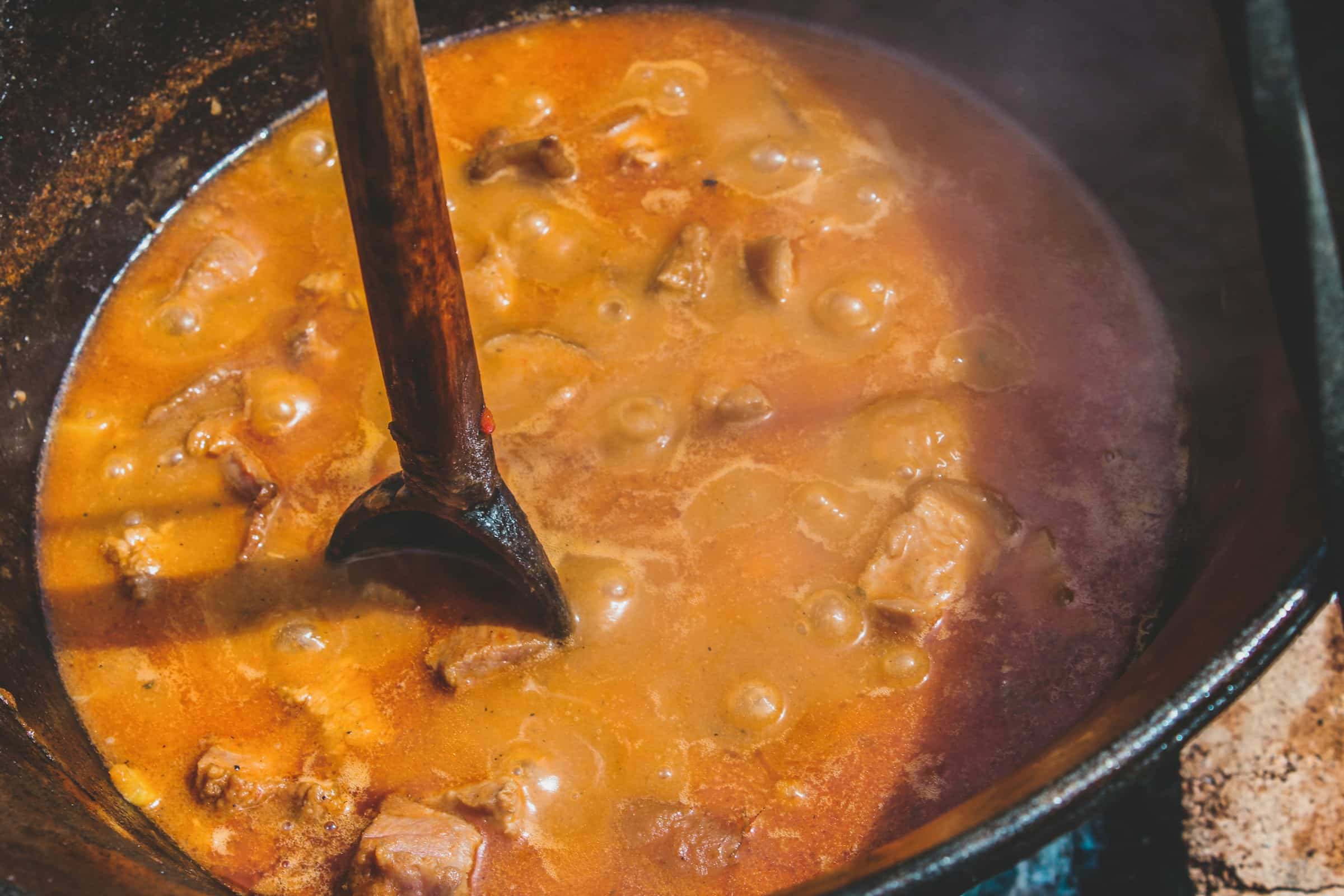What’s the Best Way to Make a Traditional Hungarian Goulash Soup?

There’s a vivid and flavorful dish that hails from Eastern Europe, a dish that has captured the hearts and palates of people around the globe. Yes, we’re talking about Hungarian Goulash Soup. This hearty and spicy beef stew, seasoned with paprika and other aromatic spices, is a perfect embodiment of Hungarian cuisine’s soul. As a traditional dish, it’s deeply woven into Hungary’s cultural fabric, with a history tracing back hundreds of years. Here, we’ll delve into the details of how to make it from scratch.
Traditional Hungarian Goulash Soup: A Rich Cultural Heritage
Hungarian goulash, or "gulyás" as it’s known in its homeland, is a dish steeped in tradition. Its origins can be traced back to Hungary’s pastoral, nomadic cultures. This rustic beef soup, made with peppers, potatoes, and paprika, was initially prepared by herdsmen in the fields. They would cook it over an open fire in a kettle known as a "bográc."
Dans le meme genre : How to Make a Gourmet Salted Caramel Cheesecake with a Chocolate Crust?
In the 16th century, paprika was introduced to Hungary from the Americas. This spice soon became a staple in Hungarian kitchens and was added to the goulash, giving it a distinctive color and flavor. So, while goulash may seem like a simple soup, it embodies more than a recipe; it reflects a rich cultural heritage and a story of resilience and adaptation.
Making the Base of the Soup: The Pörkölt
The first step to making an authentic Hungarian goulash is to prepare the base of the soup, known as the "pörkölt." This is a rich, thick stew made with beef, onions, and paprika, simmered until the beef is tender and the flavors are well combined.
En parallèle : Can You Prepare a Gourmet Gravlax with Dill and Mustard Sauce at Home?
Start by heating some lard or oil in a heavy-bottomed pot, then add the chopped onions. Cook them until they turn translucent, then add the beef. It’s important to use good-quality beef, as this is the heart of the dish. Once the beef is browned, add the garlic and paprika, stirring well to ensure the spices are evenly distributed.
Incorporating the Signature Flavors: Paprika and Caraway Seeds
Paprika and caraway seeds are the signature flavors of Hungarian goulash. The heat from the paprika and the distinct, anise-like flavor of the caraway seeds create a symphony of tastes that give the goulash its unique character.
When making Hungarian goulash, it’s essential to use Hungarian paprika. This might be sweet or hot, depending on your preference, but it should always be Hungarian. Also, make sure to add the paprika off the heat to prevent it from burning, which would give the soup a bitter taste.
As for the caraway seeds, toast them lightly before grinding them to release their oils and maximize their flavor. Add them to the pot along with the paprika, then return the pot to the heat and continue to cook the stew.
The Secret to a Hearty Goulash: Potatoes and Peppers
For a hearty and satisfying goulash, potatoes and peppers are key. They not only make the soup more substantial, but also contribute to its flavor and texture.
Once the base of the soup is prepared and the spices are added, you can add the chopped potatoes and peppers to the pot. Some traditional recipes also call for the addition of tomatoes, but this is optional. Continue to cook the soup for about 45 minutes, or until the potatoes are tender and the flavors are well developed.
Final Touches and Serving Suggestions
To round off the cooking process, add a pinch of salt to taste and let the goulash simmer a little longer to allow the flavors to meld together. Remember, the longer it cooks, the better the flavors will be.
Traditionally, Hungarian goulash is served with a side of fresh, crusty bread, which is perfect for soaking up the rich, flavorful broth. It’s also often accompanied by pickles, which provide a tangy contrast to the hearty, spicy soup.
In essence, making a traditional Hungarian goulash is about more than following a recipe. It’s about celebrating a rich cultural heritage, sharing a communal meal, and savoring the deep, comforting flavors of a dish that has stood the test of time.
Incorporating Root Vegetables and Seasonings
A traditional Hungarian goulash recipe isn’t complete without root vegetables and seasonings. The root vegetables often used are carrots and parsnips, adding a slight sweetness to contrast the rich flavors of the beef and paprika.
To begin this step, prepare the root vegetables by peeling and chopping them into bite-sized pieces. Add these to the pot along with beef broth. The broth not only provides additional flavor but also helps to tenderize the meat during the cooking process.
Now is also the time to add other seasonings like bay leaves. These leaves lend a subtle, herbal note that complements the robust flavors in the soup. However, remember to remove them before serving as they can be tough to eat.
Finally, the soup needs to be seasoned with salt and pepper. Seasoning is a crucial step in any recipe, and goulash is no different. A well-seasoned goulash will have a perfect balance of flavors, with no single ingredient overpowering the others.
Concluding the Cooking Process and Serving Suggestions
Once all the ingredients have been added, the goulash needs to be left to simmer for a while. The cook minutes play a crucial role in developing the depth of flavor in the soup. The longer the soup cooks, the more the flavors of the ingredients meld together, creating a harmonious mix.
After about 90 minutes, your goulash should be ready to serve. At this point, some cooks like to stir in a bit of sour cream to add a hint of tanginess and creaminess to the dish. It’s optional, but it does enhance the overall flavor and texture of the soup.
Finally, as mentioned earlier, goulash is often served with a side of crusty bread. However, it can also be enjoyed with a side of dumplings or even over a bed of buttered egg noodles. The choice is up to you.
In conclusion, preparing an authentic Hungarian goulash soup involves a careful blend of specific ingredients and a slow cooking process. This allows the flavors to develop and meld together, resulting in a deeply satisfying and comforting dish. While the process may seem complex at first, it is well worth the effort, as you will end up with a hearty and flavorful dish that truly embodies the rich cultural heritage of Hungary. Enjoy your culinary journey to Eastern Europe through this beloved Hungarian dish!
